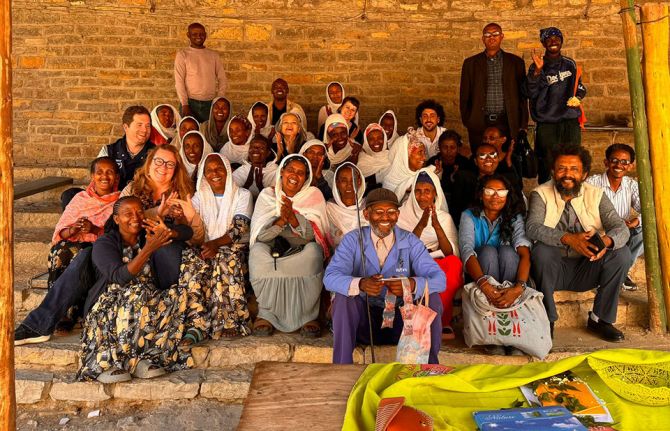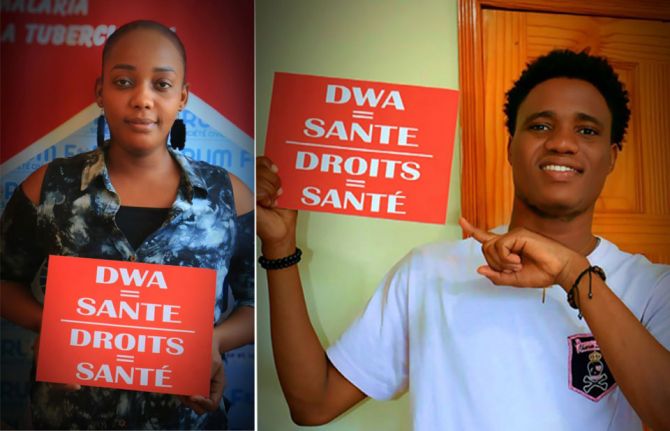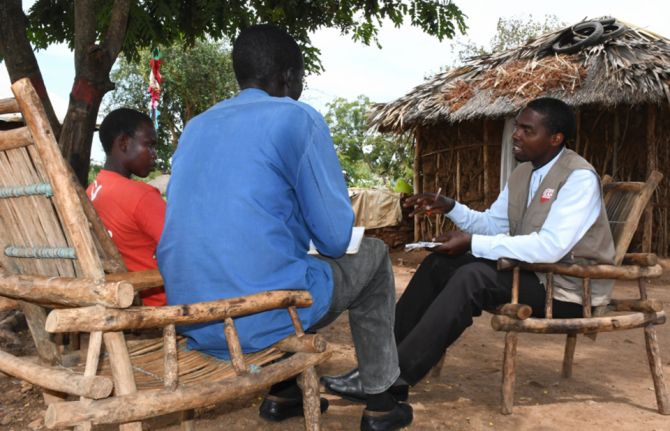
Feature Story
First global consultation on HIV and internally displaced people
04 May 2007
04 May 2007 04 May 2007
According to the Internal Displacement Monitoring Centre of the
Norwegian Refugee Council, there are some 24.5 million
conflict-related IDP’s in at least 52 countries around the world.
Photo credit: UNHCR/H.Coussidis
The first global consultation on HIV and internally displaced people took place in Geneva from 24 to 25 April, bringing together some 45 experts from governments, United Nations agencies, non-governmental organizations and the academic world.
The global consultation, convened by one of UNAIDS’ Cosponsoring organisations the United Nations High Commission for Refugees (UNHCR), was the first of its kind to be held specifically to address the effects of HIV on internally displaced populations (IDP’s).
"This is a neglected area where the needs are great but we frankly don't know enough about the various situations," says Paul Spiegel, head of United Nations High Commission for Refugees (UNHCR) HIV unit. "This is only the beginning of a process which, hopefully, will help us identify gaps, plan joint programmes and improve services for IDPs."
Like refugees, internally displaced persons are civilians who have been victims of violence, persecution or human rights violations, or who have been forced out of their homes by conflict. But, unlike refugees, IDPs remain in their own country.
“Even in the absence of large amounts of data, there is no doubt that internally displaced people are a unique group with special HIV needs,” said Elhadj As Sy, Director of Communications and External Relations at UNAIDS. “Many will have suffered from trauma and violence, including sexual violence, during conflict. Some remain anonymous for various reasons including, security concerns, making their access to HIV services difficult.”
Displaced people, however, are not necessarily more vulnerable to HIV infection, says Spiegel. "In the case of refugees, people at first believed that they had higher HIV prevalence than host communities, but this proved not to be the case. We need to do more research on the effects of displacement on HIV infection."
Colombia , Côte d'Ivoire, the Democratic Republic of the Congo, Myanmar, Nepal and Uganda were highlighted during the consultation along with some eastern European countries.
"It is not possible to have a single approach to all these situations. The situation in each country, and sometimes even in each region within a country, is completely different," said Spiegel. "We hope that we will learn from the different experiences of those attending the consultations. We need everybody to become involved. We need everybody's help."
The consultation was held to raise awareness and result in more effective joint advocacy and programming, as well as in more research on HIV and IDP issues.
According to the Internal Displacement Monitoring Centre of the Norwegian Refugee Council, there are some 24.5 million conflict-related IDP’s in at least 52 countries around the world. Between 70 and 80 percent of them are women and children. The countries with the largest internally displaced populations are Sudan, Colombia, Iraq, Uganda and the Democratic Republic of the Congo.
Under the general umbrella of the Office of the UN emergency relief coordinator, UNHCR has been given the lead role in overseeing the protection and shelter needs of IDPs as well as the coordination and management of camps. Other UN agencies have adopted similar roles in the areas of water, nutrition, health, logistics and telecommunications.
This story first appeared on the UNHCR website on the 24 April 2007. UNHCR strives to ensure that refugees live in dignity, free from discrimination, regardless of their HIV status, and to provide at least the core HIV/AIDS interventions during emergencies.
Links:
Visit UNHCR Website



